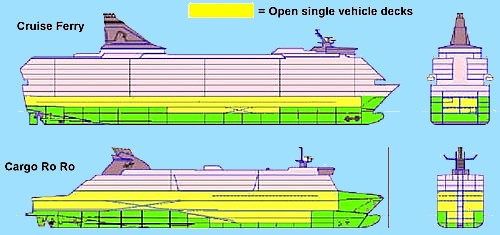
The modern roll-on/roll-off ship can trace its origins back more than one hundred years to the early days of the steam train. Ships were specially designed to take trains across rivers which were too wide for bridges: the ships were equipped with rails, and the trains simply rolled straight on to the ship, which sailed across the river to another rail berth where the train would roll off again. An example is the Firth of Forth ferry in Scotland, which began operations in 1851.
It was not until the Second World War, however, that the idea of applying the ro-ro principle of road transport became practicable - and was used in constructing the tank landing craft used at D-Day and in other battles. The principle was applied to merchant ships in the late 1940s and early 1950s. It proved to be extremely popular, especially on short-sea ferry routes, encouraged by technical developments on land as well as sea, notably the increase in road transport.
For the shipper, the ro-ro ship offered a number of advantages over traditional ships, notably speed. As the name of the system implies, cars and lorries can drive straight on to a ro-ro ship at one port and off at the port on the other side of the sea within a few minutes of the ship docking.
Ro-ro ships also integrate well with other transport development, such as containers, and the use of Customs-sealed units (first introduced in the late 1950s) has enabled frontiers to be crossed with the minimum of delay, thereby further increasing speed and efficiency for the shipper.

|